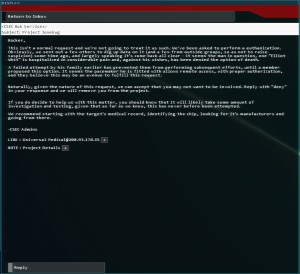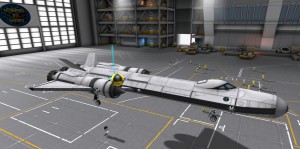Morale issues
During my ongoing literature review I often discover interesting facts about things I’ve never thought about. Sometimes I can connect these facts with my own observations: The result is mostly a completely new idea why things are as they are. Maybe these ideas are new to you, too. Therefore I’ll share my new science based knowledge with you!
This week: This time, I think about the great potential of computer games to present and discuss morale issues.
During the gameplay of a computer game, players frequently have to make choices in order to proceed with the game. Depending on the type of the game, those decisions can have a significant impact on the story and/or the player’s progression and, as a result of this, the game becomes more entertaining as choices do matter. The importance of choices is even enhanced by the fact that the virtual worlds are highly immersive and thus feel real to the players. Especially role-playing games (RPG) benefit from a system that allows the players to make important choices as it enhances the immersive feeling of being part of the virtual world.
For example, during the gameplay of the Mass Effect [1] trilogy, players frequently have to make important decisions that will have an impact on the whole story. In one of the core missions of the first game, the player has to choose between one of two squad members as there is only enough time to save one of them. The decision made during this mission has an impact on the rest of the trilogy’s story as one of the both squad members will die and hence the story connected to this person will not be available for the player during this playthrough.
The system of decision making can even be used to confront players with morale issues and to allow them to test their own morale values. During the gameplay of such a game, players can train morale decision making by analyzing morale and immorale effects of the potential actions. Furthermore, they will get a feedback about the outcomes of their decisions and thus can evaluate the morality of their actions.
Aside from actively demanding a morale decision, computer games can also raise ethical questions by presenting controversial topics. Recently, I have completed the computer game „Hacknet“ [2] that puts the player into the role of a hacker who has to break into computer systems in order to complete missions and finally to learn about the fate of one of his friends. During the gameplay, the player has to accept a mission that requires the sabotage of a patient’s pacemaker, as the patient is hospitalized and has been denied the option of death although he asked for it. Due to the morale issues that are raised during the mission, the player can deny the request and is not required to complete the contract. However, accepting the mission is the only way to get the IP address of a server where an important hacking tool is stored and thus the player gets introduced to the topic of euthanasia even if he decides to abandone the contract after having downloaded the important software.
The game itself does not continue to discuss the topic of euthanasia, but it will stick in the player’s head and make him think about the morale issues of active euthanasia. Additionally, the game also raises questions about the storage of medical data and the technological advancements of sensible instruments as the player has to hack a medical database in order to find the IP address of the patient’s pacemaker which has a constant access to the internet in order to be updated.
Moreover, the player can start to think about his assignment and the way how he solves the request. At first, the player receives an e-mail that contains all the important information, but he never meets someone in person. Furthermore, the player searches for the IP address in a medical database, but there is no guarantee that this entry is correct. Finally, the player sabotages the pacemaker via a short console command and remotely ends the life of someone else. In the end, the player has to test the own morale values and think about the own reasons for completing the contract.
Computer games are an ideal environment for presenting and discussing morale issues as the immersion makes them feel real. Additionally, the player immediately receives feedback about the own actions and has to deal with results. In the end, computer games can help the players to morally analyze problems and to practice their morale decision making in a safe environment [3].


